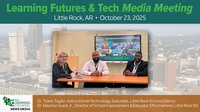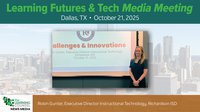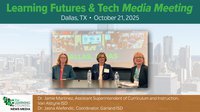Gov. Newsom won’t bend on directing billions to low-income students’ learning loss – By John Fensterwald, EdSource
Gov. Gavin Newsom said Friday he would not compromise with the Legislature on focusing more than $4 billion in federal coronavirus aid to address the learning loss that low-income students have experienced disproportionately during school closures caused by the pandemic.
Newsom’s method of distributing the bulk of the money exclusively to districts with large concentrations of “high-needs students” — English learners, low-income, foster and homeless students — has become a point of contention. Senate and Assembly leaders jointly proposed spreading the money widely among more districts in their alternate version of the state budget that they released Wednesday.
But in rejecting the Legislature’s proposal, Newsom cited new research by McKinsey & Company projecting that black students would return to school this fall even farther behind than they had been compared with other student groups.
“We are committed to the cause of equity. And that’s the reason we put that $4.4 billion in the budget to focus on equity,” he said during Friday’s press conference on how his administration will respond to longstanding disparities in health, child care, incarceration and education between black students and other student groups.

$275M in CARES funds allocated to Alabama higher education – By Mary Sell, Alabama Daily News
Alabama colleges and universities are getting about $275 million directly from the federal government to help mitigate the impacts of the coronavirus on them and at least some of their students.
Seventy public and private colleges and universities, and a handful of cosmetology schools, were eligible for the funding under the federal CARES Act enacted in March. The money was doled out under three categories, the largest being a Higher Education Emergency Relief Fund. It totaled nearly $200 million, according to information from the Alabama Department of Finance. At least half was to be distributed to students with financial needs. The other half can be spent by institutions for COVID-related costs.
“Campuses were impacted in different ways and thus will spend the CARES Act funds differently,” Alabama Commission on Higher Education Executive Director Jim Purcell told Alabama Daily News.
The health pandemic closed many campuses in March, sending classes online and students home for the remainder of the semester. In this summer semester, most learning continues to be done by distance.

Florida relaxes Bright Futures scholarship rules on volunteer hours, test scores – By Ana Ceballos, The Miami Herald
Education Commissioner Richard Corcoran late Wednesday signed an emergency order that eases some eligibility requirements for awards under the Florida Bright Futures Scholarship Program.
Many graduating high school seniors have struggled to complete volunteer service hours and improve SAT or ACT test scores after the COVID-19 pandemic shut down schools and test sites this spring and early summer.
The order said Corcoran found it “necessary” to take steps such as partly suspending rules and laws that require students to complete volunteer service hours. Also, he extended a deadline to earn qualifying standardized test scores for the different types of scholarships offered in Bright Futures.
If students were unable to complete volunteer work during the 2019-20 academic year, the order will allow them to submit statements from school counselors or authorized administrators that certify the students “had planned for, and intended to complete” the service hours.

The Future of Apprenticeships – By Madeline St. Amour, Inside Higher Ed
Virtual apprenticeships could be a boon to the future, some experts say. They would open up opportunities for those with disabilities that make working in an office difficult, or provide greater access to those in areas with a dearth of apprenticeship options.
But virtual options could lack the important pieces of apprenticeships that make them successful, others say.
Nationally, registered apprenticeships require two components: classroom learning and on-the-job training with a mentor. When the COVID-19 pandemic hit, both pieces had to scramble to move online.
"This is an area where we’re working with the [U.S. Department of Labor] to show that our sector, like many other nontraditional sectors, can have different operating styles," said Jennifer Carlson, executive director and co-founder of Apprenti, a tech apprenticeship program. "This will be a great proof point to show that people are still able to do well."












